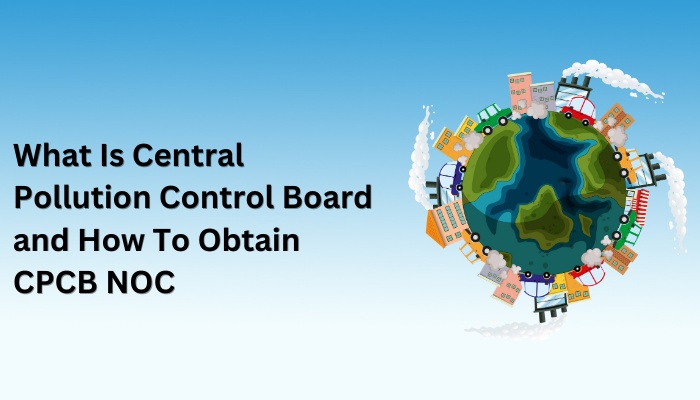What Is Central Pollution Control Board In India
The Central Pollution Control Board (CPCB) is a statutory organization in India that is responsible for monitoring and controlling pollution in the country. It was established in 1974 under the Water (Prevention and Control of Pollution) Act, 1974. The CPCB's main functions include:
- Monitoring the quality of air and water in the country and taking steps to improve it
- Coordinating with state pollution control boards to enforce environmental laws and regulations
- Providing technical assistance to state pollution control boards
- Conducting research and providing education on pollution control
- Advising the government on pollution control policies and programs
The CPCB is headquartered in New Delhi and has regional offices in various states in India. It also has various divisions dealing with specific types of pollution such as air, water, noise and hazardous waste management.
History of CPCB in India
The Central Pollution Control Board (CPCB) was established in India in 1974 under the Water (Prevention and Control of Pollution) Act, 1974. The main objective of the CPCB at the time of its inception was to provide technical assistance to state pollution control boards and to conduct research on various aspects of pollution control.
In the early years of its existence, the CPCB focused primarily on water pollution but later expanded its scope to include air pollution and other forms of pollution as well. In 1986, the CPCB was reconstituted as a statutory body under the Air (Prevention and Control of Pollution) Act, of 1981.
Throughout the years, CPCB has been implementing various laws, programs, and schemes for pollution control, and has been instrumental in bringing about improvement in the quality of air and water in the country. It has also been undertaking monitoring, research, and analysis of ambient air and water quality, and has been providing technical support to the State Pollution Control Boards.
In recent years, CPCB has been working on various initiatives and schemes for controlling pollution, such as National Clean Air Programme, National Green Tribunal, National River Conservation Plan, and National Ambient Air Quality Standards.
Overall, CPCB plays a vital role in protecting the environment and preserving natural resources in India by implementing laws, regulations, and policies aimed at reducing pollution and preserving the environment, and has been instrumental in bringing about improvements in the quality of air and water in the country.
CPCB Categories
CPCB categories
The Central Pollution Control Board (CPCB) in India categorizes industries and areas into different categories based on their potential for pollution. These categories are used to determine the level of monitoring and regulation required for each area or industry. The categories are generally based on the type and quantity of pollutants emitted and the potential impact on the environment and human health. The CPCB has several categories, here are a few examples:
- Red category: Industries that are considered highly polluting and have a significant impact on the environment and human health. These industries are closely monitored and regulated by the CPCB.
- Orange category: Industries that have the potential to cause pollution but are not considered highly polluting. These industries are monitored and regulated, but not to the same extent as red-category industries.
- Green category: Industries that are considered to have a low potential for pollution and have minimal impact on the environment and human health. These industries are generally not closely monitored and regulated.
- White category: Industries that are considered to be non-polluting and have no impact on the environment or human health. These industries are not regulated by the CPCB.
- Non-Industrial area: Residential, commercial, institutional, agricultural, and other areas which are not industrial in nature. CPCB monitors the ambient air quality in these areas and issues guidelines for pollution control.
It's worth noting that these categories are not fixed, and industries can be moved to different categories depending on changes in their operations or the level of pollution they generate.
How To Obtain NOC From CPCB
Obtaining a No Objection Certificate (NOC) from the Central Pollution Control Board (CPCB) is a process that industries and other organizations must go through in order to operate legally in India. The process of obtaining a NOC from CPCB typically involves the following steps:
- Submit an application: The first step in obtaining a NOC from CPCB is to submit an application to the relevant CPCB office. The application should include details of the proposed operation, such as the type of industry, the location, and the expected emissions and waste generation.
- Environmental Impact Assessment (EIA): The applicant must also submit an Environmental Impact Assessment (EIA) report, which is an evaluation of the potential environmental impact of the proposed operation. The EIA report must be prepared by an accredited consultant and must be approved by the CPCB.
- Inspection and review: After the application and EIA report have been submitted, the CPCB will conduct an inspection of the proposed location and review the application and EIA report. The CPCB may also consult with other relevant government agencies, such as the state pollution control board, before making a decision.
- Decision: After the review, the CPCB will make a decision on whether to grant the NOC. If the CPCB decides to grant the NOC, it will issue a certificate to the applicant. If the CPCB decides not to grant the NOC, it will give the applicant a notice of deficiency, which will explain the reasons for the decision.
- Compliance: If NOC is granted, the industry should comply with the conditions and guidelines mentioned in the NOC, and it should also regularly report the compliance status to CPCB.
It is important to note that the process and requirements for obtaining an NOC from CPCB may vary depending on the type of industry and location, and it is recommended that you consult with CPCB officials or an environmental consultant for specific guidance and assistance in the process.
Documents Require for CPCB NOC
To obtain a No Objection Certificate (NOC) from the Central Pollution Control Board (CPCB), you will typically need to submit a number of documents along with your application. The specific documents required will depend on the type of industry or operation for which you are seeking a NOC, but some common documents that are generally required include:
- Application form: The CPCB has a specific application form that must be filled out and submitted. The form will typically require information about the proposed operation, such as the type of industry, the location, and the expected emissions and waste generation.
- Environmental Impact Assessment (EIA) report: An EIA report is an evaluation of the potential environmental impact of the proposed operation. The EIA report must be prepared by an accredited consultant and must be approved by the CPCB. The report should include details of the project, the impact of the project, mitigation measures, and a monitoring plan.
- Proof of land ownership: You will need to provide proof of ownership of the land on which the proposed operation will take place. This may include a copy of the land title or lease agreement.
- Consent to Operate (CTO) from State Pollution Control Board (SPCB): NOC from CPCB is granted only after getting the consent to operate (CTO) from SPCB.
- Project reports: Some specific project reports like DPR, FEIA, etc are also required as per the type of industry and project.
- Other relevant documents: Depending on the type of industry or operation, you may need to provide additional documents, such as plans for waste management and disposal, details of emissions and effluent treatment systems, and permits or licenses from other government agencies.
It is important to note that the specific documents required for a NOC may vary depending on the type of industry and location, and it is recommended that you consult with CPCB officials or an environmental consultant for specific guidance and assistance in the process.


No comments yet